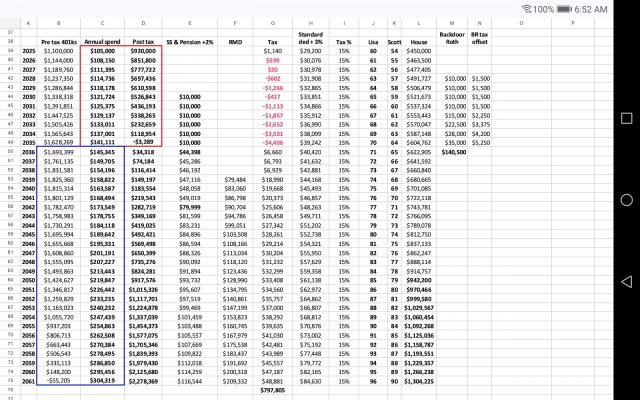Surewhitey
Thinks s/he gets paid by the post
Spent a little time trying to make my explanation for DW on our situation. I'd love some input on your ideas and hole poking.
Very high view of spending & accounts to pull from here. Red pill is the post tax drawdown and possible ACA benefits. Our spending is ~$70k, so a $105k would give us some wiggle room for lumpy stuff.
The blue pill is pre tax accounts with RMDs & a 15% tax on everything (gotta start somewhere).
SS & Pension will be fluff going back into the post tax & grow for future needs. All growth is a modest 4% assumption.
I'd love some feedback from the spreadsheet nerds out there. Anything I can do to simplify?
Very high view of spending & accounts to pull from here. Red pill is the post tax drawdown and possible ACA benefits. Our spending is ~$70k, so a $105k would give us some wiggle room for lumpy stuff.
The blue pill is pre tax accounts with RMDs & a 15% tax on everything (gotta start somewhere).
SS & Pension will be fluff going back into the post tax & grow for future needs. All growth is a modest 4% assumption.
I'd love some feedback from the spreadsheet nerds out there. Anything I can do to simplify?
Attachments
Last edited:

